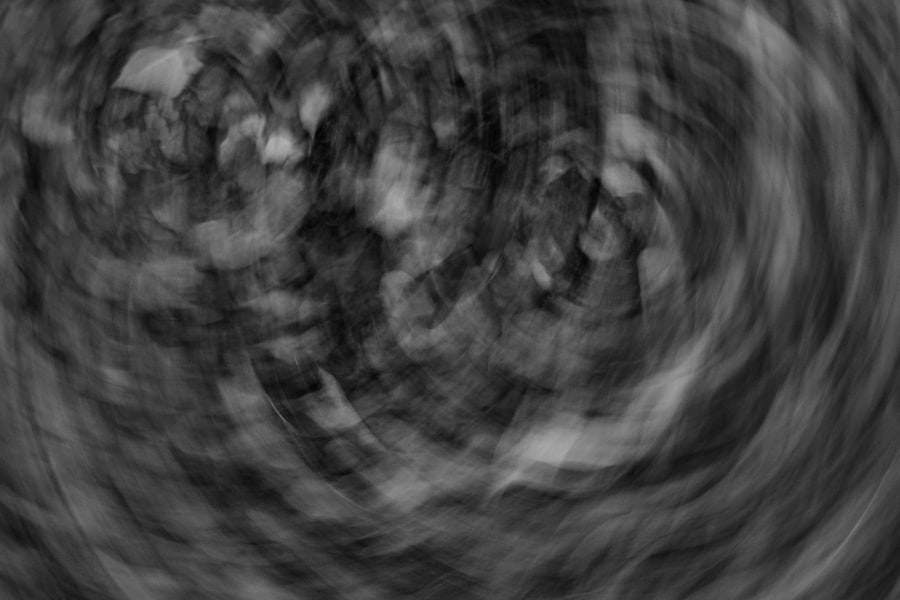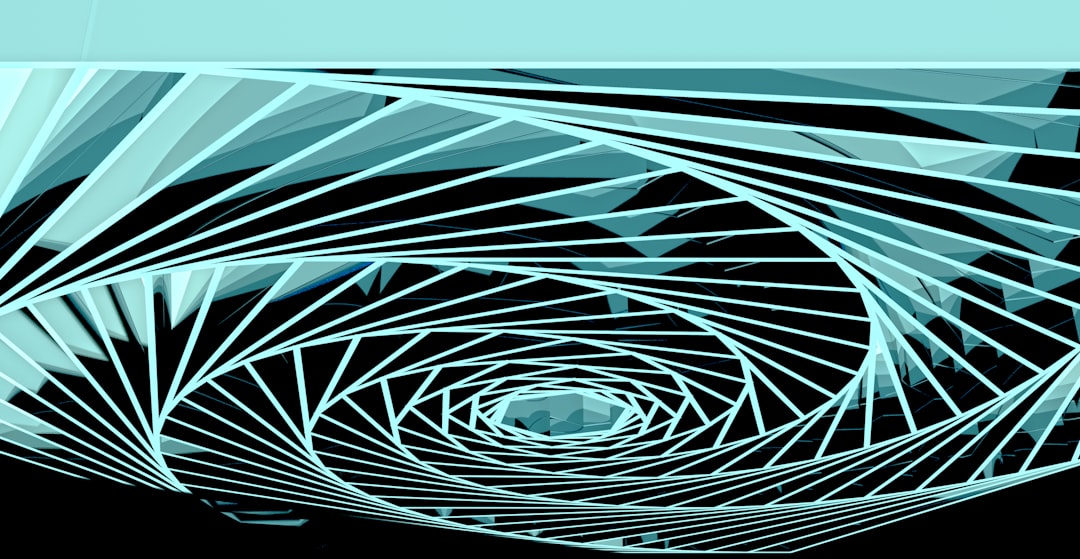The concept of 4D spacetime is a fundamental aspect of modern physics, merging the three dimensions of space with the dimension of time into a single four-dimensional continuum. This revolutionary idea emerged from the theories of Albert Einstein, particularly his theory of relativity, which posits that time is not a separate entity but rather intertwined with the spatial dimensions. In this framework, events are described not merely by their location in space but also by their position in time, creating a more comprehensive understanding of the universe.
In 4D spacetime, the fabric of reality is woven together in such a way that the geometry of space and the flow of time are interdependent. This means that massive objects can warp spacetime, leading to phenomena such as gravitational time dilation, where time moves slower in stronger gravitational fields. The implications of this concept extend far beyond theoretical physics; they challenge our intuitive perceptions of reality and compel scientists to rethink the nature of existence itself.
Key Takeaways
- 4D spacetime combines three spatial dimensions with time into a unified framework essential for modern physics.
- Mathematical models like Minkowski space provide a formal way to represent 4D spacetime.
- Analogies and metaphors help make the abstract concept of 4D spacetime more understandable.
- Visualization tools, including computer simulations and VR, enhance comprehension and exploration of 4D spacetime.
- Despite advances, visualizing 4D spacetime remains challenging, with ongoing research and technology development shaping its future.
The mathematical representation of 4D spacetime
Mathematically, 4D spacetime is often represented using a four-dimensional coordinate system, typically denoted as (x, y, z, t), where x, y, and z represent spatial coordinates and t represents time. This framework allows physicists to describe events in a unified manner, facilitating calculations and predictions about the behavior of objects in motion. The metric tensor, a mathematical object that encapsulates the geometric properties of spacetime, plays a crucial role in this representation.
It helps to define distances and angles in this four-dimensional space, allowing for a rigorous understanding of how objects interact within it. The equations governing 4D spacetime are derived from Einstein’s field equations, which relate the curvature of spacetime to the energy and momentum of matter within it. These equations are complex and require advanced mathematical tools to solve, often involving differential geometry and tensor calculus.
The solutions to these equations can describe various phenomena, from black holes to the expansion of the universe, illustrating how deeply intertwined mathematics is with our understanding of the cosmos.
Visualizing 4D spacetime using analogies and metaphors

Visualizing 4D spacetime poses significant challenges due to its inherent complexity. However, analogies and metaphors can provide valuable insights into this abstract concept. One common analogy is that of a loaf of bread, where each slice represents a moment in time.
As one moves through the loaf, they traverse different spatial configurations at various points in time. This metaphor helps to illustrate how time can be viewed as an additional dimension that complements the three spatial dimensions. Another effective metaphor is that of a film reel.
Each frame on the reel corresponds to a specific event in spacetime, while the entire reel represents the continuum of time. Just as one can move forward or backward through a film, one can conceptualize moving through different moments in 4D spacetime. These analogies serve to bridge the gap between abstract mathematical concepts and tangible experiences, making it easier for individuals to grasp the intricacies of 4D spacetime.
Exploring the implications of 4D spacetime in physics and cosmology
| Aspect | Metric/Parameter | Value/Description | Implications in Physics and Cosmology |
|---|---|---|---|
| Dimensions | Number of Dimensions | 4 (3 spatial + 1 time) | Foundation of spacetime concept; unifies space and time into a single manifold |
| Spacetime Interval | Invariant Quantity | Δs² = -c²Δt² + Δx² + Δy² + Δz² | Preserves causality and relativistic invariance; key to special relativity |
| Curvature | Ricci Curvature Tensor (Rμν) | Varies with mass-energy distribution | Describes how matter and energy curve spacetime; basis of General Relativity |
| Metric Tensor | gμν Components | Defines geometry of 4D spacetime | Determines distances and angles; essential for describing gravitational effects |
| Cosmological Constant | Λ (Lambda) | Approximately 1.1 × 10⁻⁵² m⁻² | Represents dark energy; influences accelerated expansion of the universe |
| Time Dilation | Factor γ (Lorentz factor) | γ = 1 / √(1 – v²/c²) | Shows how time slows down at high velocities; confirmed experimentally |
| Event Horizon | Radius (Schwarzschild radius) | r_s = 2GM/c² | Defines boundary of black holes in 4D spacetime; affects causal structure |
| Geodesics | Paths of Free-falling Particles | Determined by metric and curvature | Describe motion under gravity without forces; fundamental in cosmology and astrophysics |
| Big Bang Model | Age of Universe | Approximately 13.8 billion years | 4D spacetime framework allows modeling of universe evolution from singularity |
| Gravitational Waves | Amplitude and Frequency | Detected signals in Hz to kHz range | Ripples in 4D spacetime; confirm predictions of General Relativity |
The implications of 4D spacetime are profound and far-reaching within both physics and cosmology. In physics, it has led to a deeper understanding of gravity as a curvature of spacetime rather than a force acting at a distance. This shift in perspective has revolutionized how scientists approach problems related to motion and energy.
For instance, the prediction of gravitational waves—ripples in spacetime caused by accelerating masses—has opened new avenues for astronomical observation and has been confirmed through direct detection. In cosmology, 4D spacetime provides a framework for understanding the evolution of the universe itself. The Big Bang theory, which describes the origin of the universe, relies on concepts from 4D spacetime to explain how space and time have expanded since that initial singularity.
Furthermore, theories regarding dark matter and dark energy also utilize this framework to explore the universe’s structure and fate. As researchers continue to investigate these cosmic mysteries, the role of 4D spacetime remains central to their inquiries.
Tools and techniques for visualizing 4D spacetime
To visualize 4D spacetime effectively, scientists and educators employ various tools and techniques that leverage both technology and creative methods. One common approach is through computer simulations that model the behavior of objects within a four-dimensional framework. These simulations can illustrate complex interactions and phenomena such as gravitational lensing or the dynamics of black holes, providing an interactive experience that enhances understanding.
Additionally, educational software and virtual reality (VR) applications have emerged as powerful tools for visualizing 4D concepts. By immersing users in a simulated environment where they can manipulate objects in four dimensions, these technologies allow for an experiential learning process that transcends traditional methods. Such tools not only aid in comprehension but also inspire curiosity and engagement with advanced scientific concepts.
The role of technology in visualizing 4D spacetime

Technology plays an indispensable role in advancing the visualization of 4D spacetime. High-performance computing has enabled researchers to perform complex calculations and simulations that were previously unimaginable. These computational advancements allow for detailed modeling of cosmic events and phenomena that occur over vast scales and timescales.
By employing techniques such as ray tracing and volumetric rendering, scientists can produce images that convey intricate details about the structure and behavior of spacetime. These visualizations not only serve as educational tools but also contribute to scientific communication by making complex ideas more accessible to broader audiences.
Artistic representations of 4D spacetime
Artistic representations of 4D spacetime offer unique perspectives that complement scientific visualization efforts. Artists often draw inspiration from scientific concepts to create works that evoke the complexities and beauty of the universe. Through various mediums—such as painting, sculpture, or digital art—artists can explore themes related to time, space, and existence in ways that resonate emotionally with viewers.
One notable example is the use of fractals in art, which can represent complex structures found in nature while also embodying mathematical principles related to infinity and dimensionality. These artistic interpretations not only serve as aesthetic expressions but also provoke thought about the nature of reality itself. By bridging science and art, these representations foster a deeper appreciation for the mysteries inherent in 4D spacetime.
Practical applications of visualizing 4D spacetime
The practical applications of visualizing 4D spacetime extend beyond theoretical exploration; they have tangible implications across various fields. In astrophysics, for instance, simulations based on 4D models are used to predict celestial events such as supernovae or black hole mergers. These predictions can guide observational campaigns using telescopes and other instruments, enhancing our understanding of cosmic phenomena.
In engineering and technology, insights gained from 4D spacetime visualization can inform advancements in fields such as aerospace design or telecommunications. Understanding how objects move through spacetime can lead to innovations in navigation systems or communication technologies that rely on precise timing and positioning. Thus, the visualization of 4D spacetime not only enriches scientific knowledge but also drives practical advancements that impact everyday life.
Challenges and limitations in visualizing 4D spacetime
Despite advancements in visualization techniques, significant challenges remain in effectively conveying the complexities of 4D spacetime. One primary limitation is the inherent difficulty humans face when attempting to conceptualize dimensions beyond three. Our brains are wired to perceive three-dimensional space intuitively; thus, grasping an additional dimension requires abstract thinking that can be challenging for many individuals.
Furthermore, while computer simulations can provide valuable insights into 4D phenomena, they often rely on simplifications or assumptions that may not capture all aspects of reality accurately. This can lead to misinterpretations or oversimplifications of complex interactions within spacetime. As researchers continue to refine their models and visualization techniques, addressing these challenges will be crucial for enhancing public understanding and engagement with these advanced concepts.
The future of visualizing 4D spacetime
The future of visualizing 4D spacetime holds exciting possibilities as technology continues to evolve. Innovations in artificial intelligence (AI) may enable more sophisticated simulations that adapt based on user interactions or real-time data inputs from astronomical observations. Such advancements could lead to more accurate representations of dynamic processes occurring within spacetime.
Moreover, interdisciplinary collaborations between scientists, educators, artists, and technologists will likely yield novel approaches to visualization that transcend traditional boundaries. By combining insights from various fields, new methods may emerge that enhance comprehension while inspiring curiosity about the universe’s mysteries. As society grapples with profound questions about existence and reality, effective visualization will play an essential role in shaping our understanding.
Resources for further exploration of 4D spacetime visualization
For those interested in delving deeper into the visualization of 4D spacetime, numerous resources are available across various platforms. Online courses offered by universities often cover topics related to relativity and cosmology while incorporating visualization techniques into their curricula. Websites dedicated to educational content—such as Khan Academy or Coursera—provide accessible materials for learners at all levels.
Additionally, books authored by physicists and science communicators can offer valuable insights into both theoretical concepts and visualization methods related to 4D spacetime. Engaging with documentaries or lectures available on platforms like YouTube can also enhance understanding through visual storytelling approaches. By exploring these resources, individuals can embark on their journey toward comprehending the fascinating world of 4D spacetime visualization.
To gain a deeper understanding of how to visualize four-dimensional spacetime, you can explore the article available on Freaky Science. This resource provides insightful explanations and visual aids that can help demystify the complexities of higher dimensions. For more information, visit the article here:
